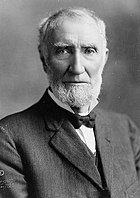United States House of Representatives elections, 1902
|
|
|||||||||||||||||||||||||||||||||||
|
|||||||||||||||||||||||||||||||||||
|
|||||||||||||||||||||||||||||||||||
|
|||||||||||||||||||||||||||||||||||
Elections to the United States House of Representatives held in 1902 occurred in the middle of President Theodore Roosevelt's first term, about a year after the assassination of President William McKinley in September 1901.
Due to the increased size of the House and the reapportionment that resulted from the 1900 U.S. Census, both the Republican Party and the Democratic Party gained seats simultaneously, which has not occurred in any future elections to date. The Democrats increased their share of the House, but not by enough to regain control. With a stable economy and no cornerstone issue, Democratic gains can mostly be linked to the effects of redistricting. Many of the new seats were in areas that featured a high number of immigrants, either Eastern and Southern European industrial workers or Northern European farmers. New immigrant groups trended Democratic. The Populist Party disappeared from the House, with its supporters almost unanimously switching to the Democratic Party. Notable freshmen included future Vice President and Speaker John Nance Garner (D-Texas).
This election marked the third and most recent time in American history where the incumbent President's party gained House seats in a midterm election while still losing seats in the Senate, the first two being in 1814 and 1822.
...
Wikipedia


